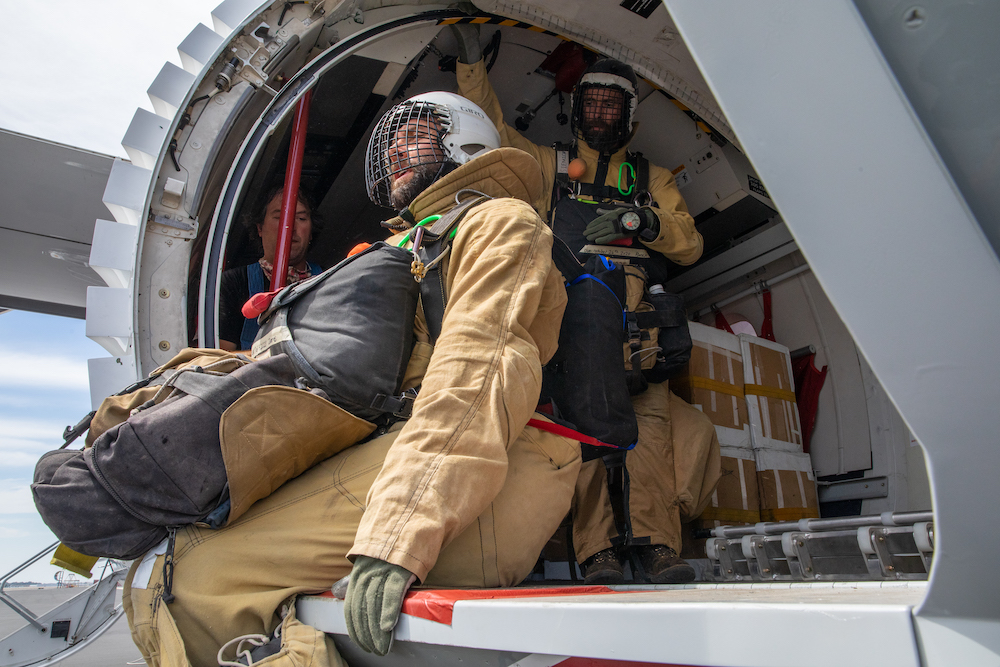The Great Basin Smokejumper base operates differently than the other smokejumper bases. Instead of a central base we use several sub bases spread across the Great Basin. This allows us to arrive at a fire much quicker than if all planes were in Boise. Sub bases serve as temporary centers of smokejumper operations. Virtually any airport with adequate runway length and fueling capabilities can serve as a sub base. Sub bases will be moved during the summer as weather and fire potential predicate.
While all smokejumper bases can operate interchangeably, the USFS smokejumpers differ in that they provide fire protection coverage primarily to forested lands. The BLM uses ram air parachutes and works to protect all public lands. The ram air parachute is better suited for areas of high winds found in rangeland country. The USFS transitioned from round parachutes to the ram air.
During the Spring, smokejumpers return for training to tune up for the fire season. They must pass a physical fitness test to verify they can still perform the job requirements. Parachute refresher training involves tower jump training to practice emergency procedures. The refresher training also includes several training jumps to ensure jumper proficiency for another season Other specialized training involves tree climbing, sometimes needed for parachute retrieval when cargo/people get stuck in dense timber.
Great Basin Smokejumpers are available for prescribed fire assignment from January to May, and from late September to November. Availability is contingent upon management priorities. They provide land managers with professional, motivated and highly trained prescribed fire specialists. The smokejumpers supply Burn Bosses, Ignition Specialists, Holding Specialists, Fire Effects Monitors, Crewmembers and a multitude of other ICS positions. They also assist managers in writing burn plans, performing site preparation work and in performing mechanical hazardous fuels reduction work.









